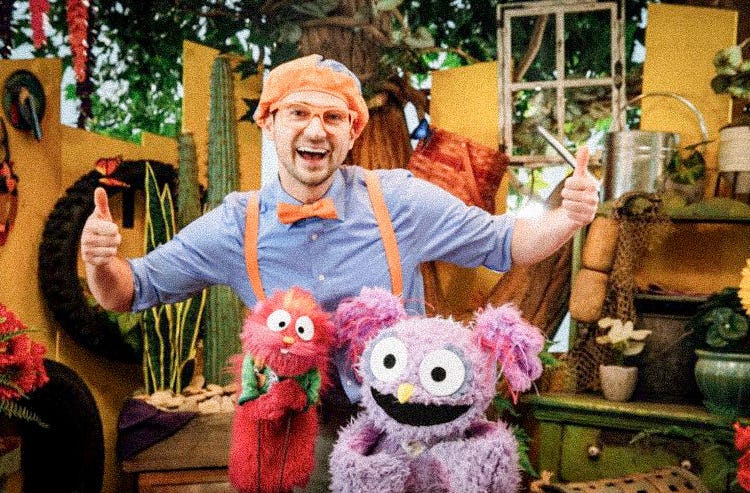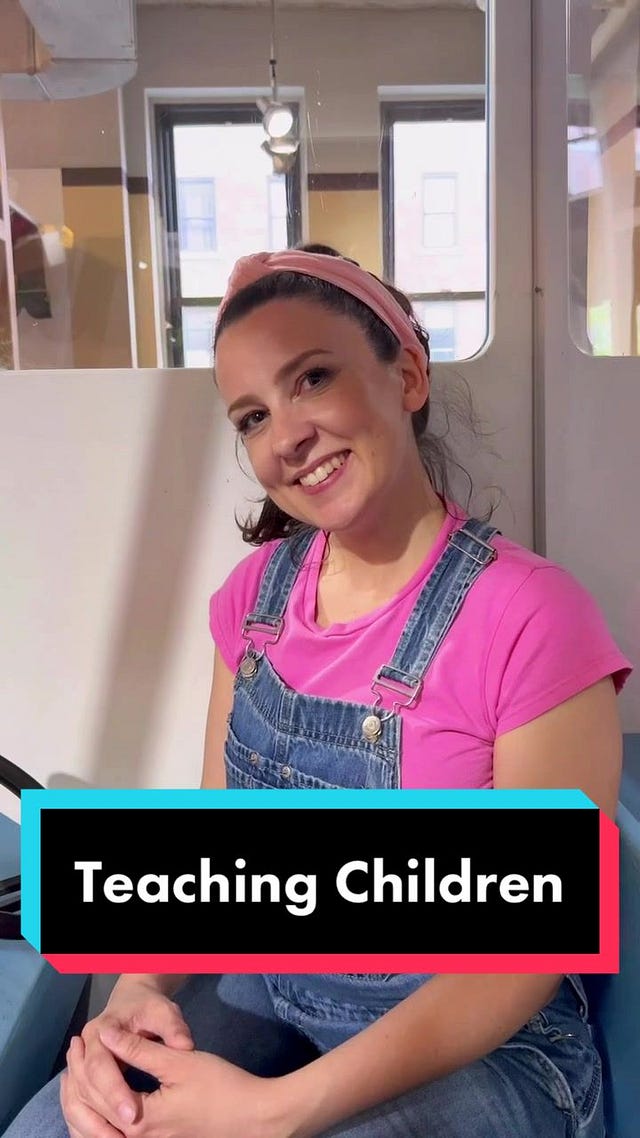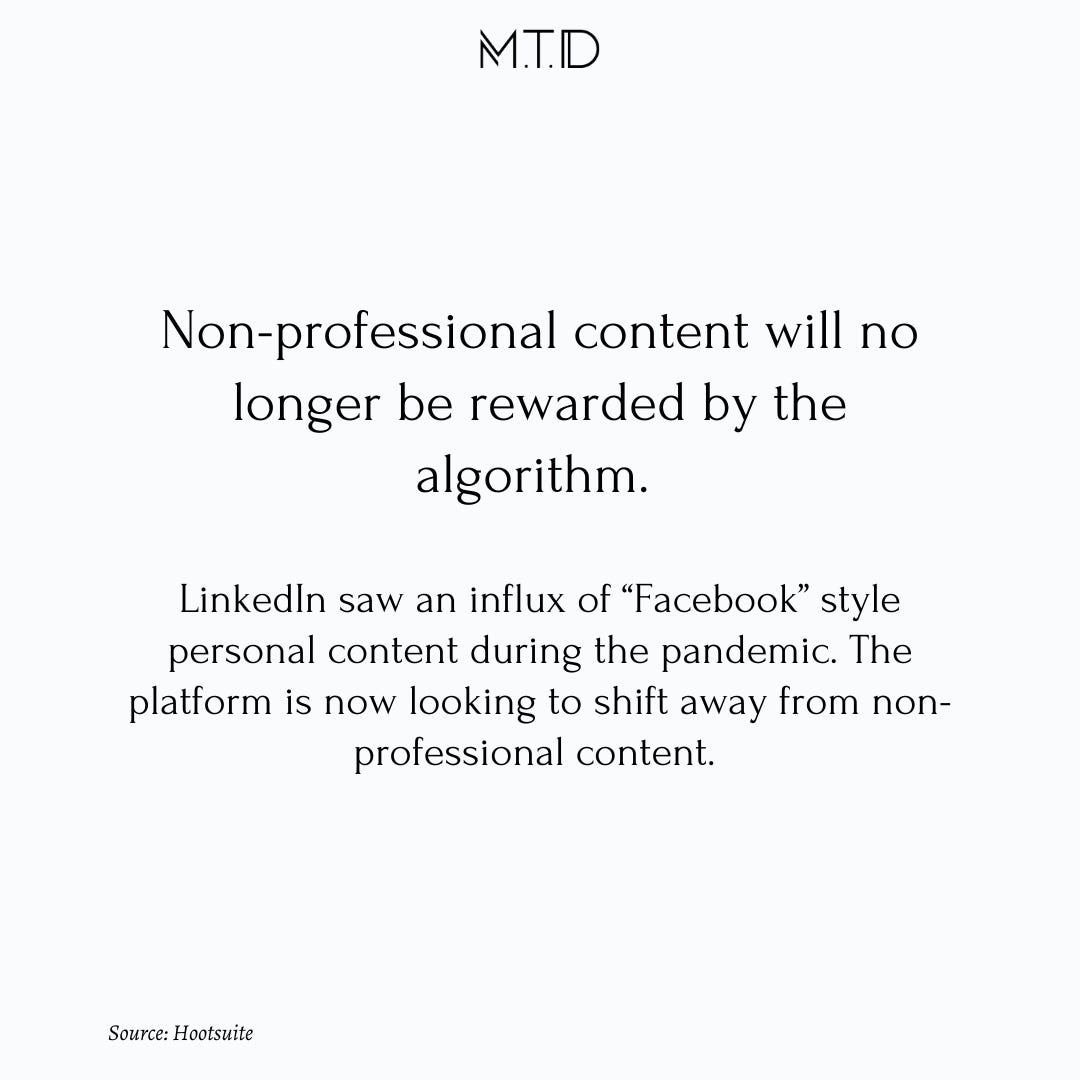How Blippi turned a one-man YouTube show into a multiverse worth millions
+LinkedIn's latest algorithm changes and how to know if a newsletter is the best move for your business
quick summary ⚡️
The three tactics Blippi used to transform a single YouTube channel into a multiverse worth millions
What you need to know about the recent changes to the LinkedIn algorithm
The ‘Aged’ filter taking over TikTok, what happens after we reach peak influence and more in the cultural moments and news that caught our attention this week
Four things to consider before starting a newsletter
what you can learn from Blippi creator Stevin John’s success
Kait Richmond is a writer, producer and contributor to the M.T. Deco Blog
Whether you know the name Blippi is very dependent on whether you have young kids. If you don’t, you’re probably thinking: “WTF is a Blippi?” If you do, you might wince at the thought of consuming more Blippi content than you already do.
Although Blippi is a show for toddlers, we can all learn from how creator Stevin John used digital strategy to take this from a one-man show made in his garage to a multiverse worth millions.
Blippi is, first and foremost, an educational YouTube show for children. In his signature blue and orange outfit, Blippi takes his viewers on adventures all over the world and teaches them about everything from making ice cream to different jobs and professions. It’s all explained just for the toddler audience, with tons of giggles and earworm songs throughout.
The YouTube channel is what started it all, and at the time of publishing this story, it’s nearing 15 billion total views. That channel is the anchor - and the launch pad - for an entire empire. Since starting in 2014, Blippi has expanded to multiple streaming services and live shows; sells toys, clothing and costumes; and started a show with a new character, Meekah. There have also been some big collaborations, including with the Olympics and, more recently, fellow kids entertainer Ms. Rachel. A movie is coming soon to theaters, too.
None of this success is by accident. From the very beginning, Stevin took this idea seriously, put in the work and was very intentional in his choices.
When he had the idea, he went into pre-production on the character. Mashable interviewed Stevin in 2018 and explained his process: “He started with the name. Pulling from his memory of a middle school lesson that kids learn from the front of the mouth to speak, he drafted 700 or 800 words that were pronounced from the front of the mouth, were short, had repeating letters, and sounded happy. After that came domain name, copyright, and trademark searches.”
From there, Stevin developed Blippi’s look, telling Mashable he selected blue because it’s “trustworthy” and orange because it’s “fun and creative.” He also considered green, but was playing the long game even then: “...I understood that in the future I was probably going to shoot green screen with a large company, and I didn’t want to be the burden to have them paint it blue. I ruled it out.”
The Blippi YouTube channel was started in January of 2014 and reached one million views in one year. Stevin was able to drop his side hustles to focus on Blippi full-time.
Stevin’s method resonates because it’s beyond the fundamental rule to have quality content. What’s the point if no one will see it? Here’s what he did:
Lean in to the algorithm of your chosen platform: Stevin was starting on YouTube, where SEO is king. He was a master at it because of his past in online marketing, and in the conversation with the K-Swiss guys, credits a lot of his early audience-building to good SEO. It’s clearly something that the Blippi team still leans into today, because all of their video titles follow the format of “title + descriptive keywords”, such as, “Blippi's Science Slime Challenge! 1 Hour of Blippi Episodes for Kids”
This means something different for each platform and requires keeping up with what each one is telling creators it’s prioritizing - but it pays off.
Know your target audience and take their feedback: Blippi’s target audience is 2-6 years old, but Stevin knew he also needed to think of their parents because they had to tolerate Blippi as much as their kids enjoyed it. He says he spent Blippi’s first year taking parent feedback and infusing it into the character.
There’s no shame in the branding game: One noticeable trademark of Blippi’s is that he ends videos by spelling his name so that his young fans will know how to find him. It’s a brilliant tactic, as the Mashable writer pointed out: “My daughter can now spell ‘Mom,”’ ‘Dad,’ ‘love,’ and ‘Blippi.’” That, plus YouTube autoplay, really helps when you have such a young audience.
In 2020, Moonbug Entertainment acquired both Blippi and CoComelon, another kids entertainment juggernaut. Then, in 2021, Candle Media bought Moonbug for $3 billion.
At the same time, Stevin was enjoying what every entrepreneur dreams of - profound success that was positively impacting people’s lives. At the end of 2020, Stevin made Forbes’ list of the highest paid YouTubers, earning $17 million with 8.2 billion views and 27.4 million subscribers.
We all have something to learn from Blippi, and we’ll continue to watch how Moonbug grows the brand to stand out in a crowded space. What’s clear is that Stevin had the passion and determination to make it work, and used his skills in marketing and production to turn his vision into a reality. With all the opportunities to learn these skills and more online, there’s no reason any of us can’t take a page from his book and create something special.
more on Blippi’s road to success on the MTD blog
icymi… LinkedIn has made some changes to their algorithm
The platform is looking to make its feed more relevant and informative.
What does this mean for you? Thought leadership is king. Instead of posting the more personal content that has become popular on the platform in recent years, double down on sharing insights and your POV on topics within your niche:
more on LinkedIn’s algorithm changes here
💎cultural gems💎
The cultural moments and news that caught our attention this week:
The internet is captivated by TikTok’s ‘Aged’ filter. The reaction to TikTok’s new filter that adds deep wrinkles and facial sagging is mixed to say the least. While some are looking forward to the aging process, others are spiraling. Hard.
We’ve hit peak influence. Now what? "Soon we could all have our own army of AI-powered virtual characters that we increasingly view as friends. And what’s the most powerful form of marketing? A recommendation from a friend.”
Stop making content for likes and views. Starting making content for your f*cking soul. According to Gary Vaynerchuk, the best way to avoid content burnout is to stop posting what you think others want to see. Lean into the content that YOU want to make.
Social media isn’t dying. It’s growing. “Next year, according to our new forecast, there will be nearly the same number of social users in the US as there are TV viewers, a historic audience shift.”
newsletters [are continuing to] have their moment 💌
With TikTok’s unknown future and the ongoing chaos on Twitter, more and more creators are moving towards “owned” platforms where they aren’t at the mercy of an algorithm.
If you’re on the fence, here are some tips to help you sort through the options:
Identify how a newsletter will support your business goals. Time is money and like anything, newsletters are a lot of work. Before you dive into producing them, be sure to understand how they’ll ultimately work for you.
Don’t rule out your owned platforms. Before you jump on a subscription service, be sure to rule out creating your own newsletter [from within the platform you use o run run your website].
Build a strategy for the newsletter itself. Once you’ve decided on the appropriate service, subscription, or through your owned platform, build a strategy for increasing subscribers.
Remember, your content is valuable. As you’re building out your digital strategy and working newsletters into that, don’t put everything on a single platform you don’t own. The purpose of publishing on a social platform is to reach more people and nurture community, but ultimately you want to bring them back to your owned platforms.
for more on considering the pros / cons on if a newsletter is the right move for you, head to the MTD blog










